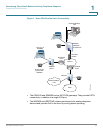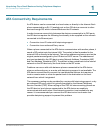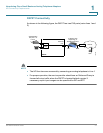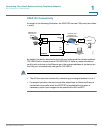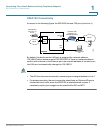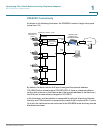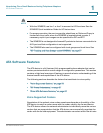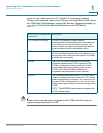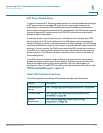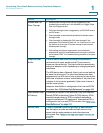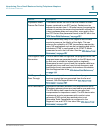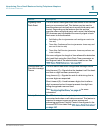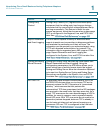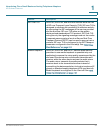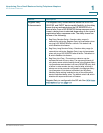
Introducing Cisco Small Business Analog Telephone Adapters
ATA Soft ware Features
ATA Administration Guide 26
1
codec is to be used for each line. G.711a and G.711u are always enabled.
Configure your preferred codec in the (FXS) tab in the Administration Web Server.
See “ATA Voice Field Reference,” on page121. See also “Supported Codecs,” on
page 54 for a list of which codecs are supported on each ATA device.
NOTE When no static payload value is assigned per RFC 1890, the ATA device can
support dynamic payloads for G.726.
Codec (Voice Compression
Algorithm)
Description
G.711 (A-law and mμ-law) This very low complexity codec supports
uncompressed 64 kbps digitized voice transmission at
one through ten 5 ms voice frames per packet. This
codec provides the highest voice quality and uses the
most bandwidth of any of the available codecs.
G.726 This low complexity codec supports compressed 16,
24, 32, and 40 kbps digitized voice transmission at one
through ten 10 ms voice frames per packet. This codec
provides high voice quality.
G.729a The ITU G.729 voice coding algorithm is used to
compress digitized speech. Cisco supports G.729.
G.729a is a reduced complexity version of G.729. It
requires about half the processing power to code
G.729. The G.729 and G.729a bit streams are
compatible and interoperable, but not identical.
G.723.1 The ATA device supports the use of ITU G.723.1 audio
codec at 6.4 kbps. Up to two channels of G.723.1 can be
used simultaneously. For example, Line 1 and Line 2 can
be using G.723.1 simultaneously, or Line 1 or Line 2 can
initiate a three-way conference with both call legs using
G.723.1.
NOTE: The WRP400 device does not support the
G.723.1 audio codec.




